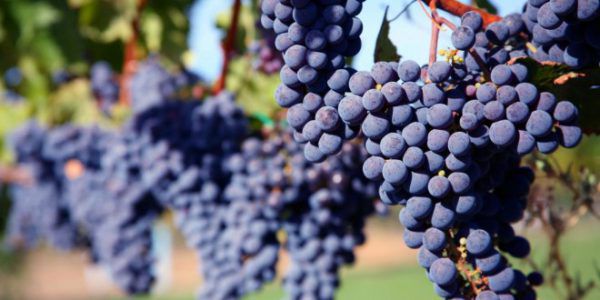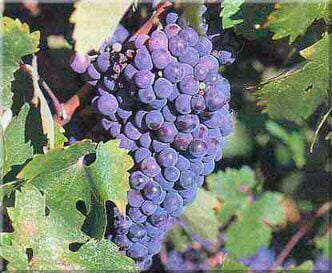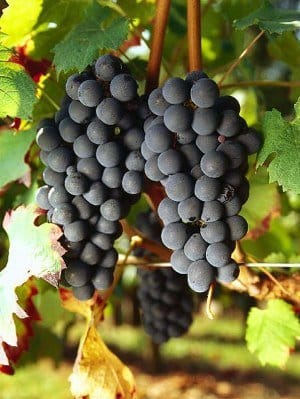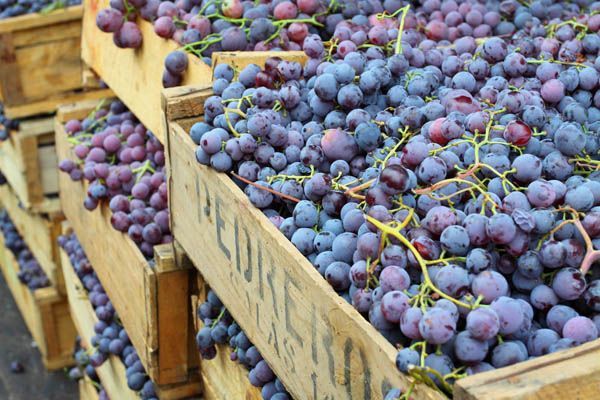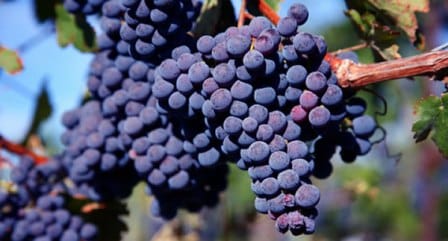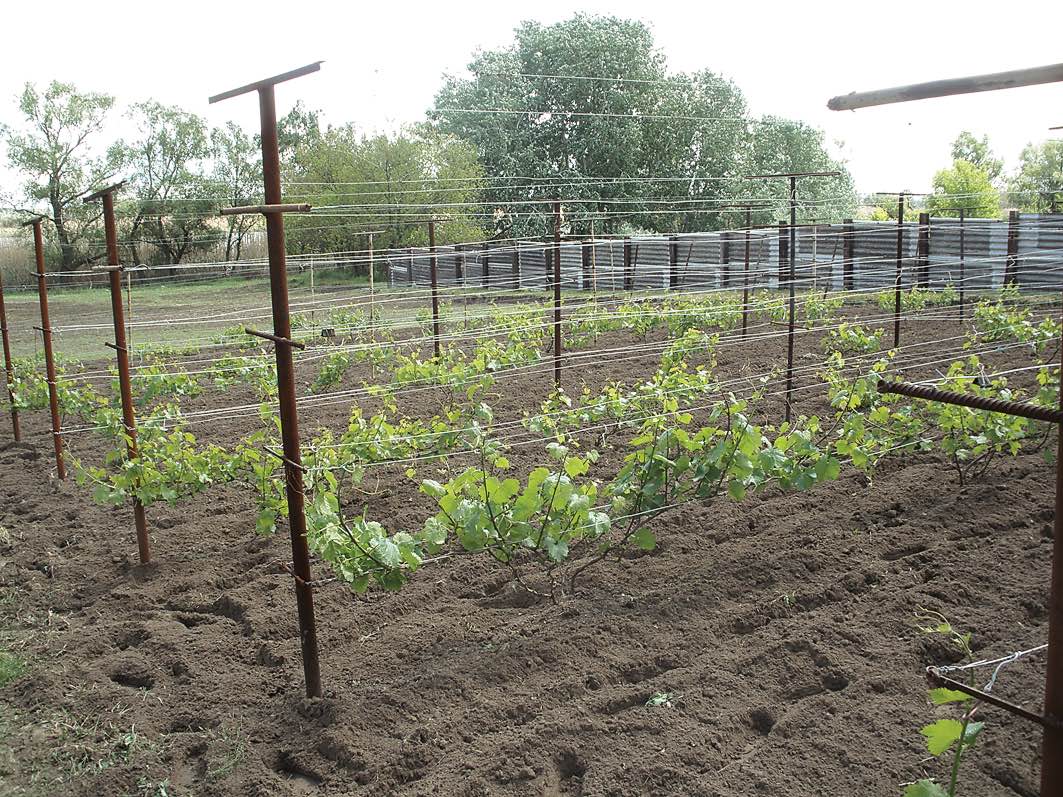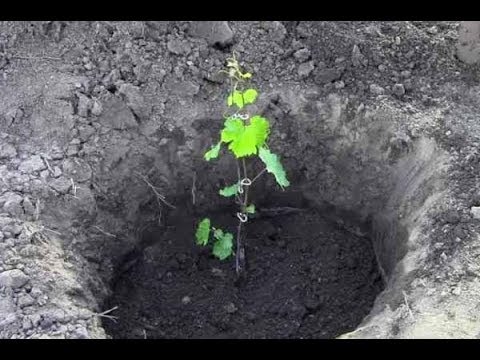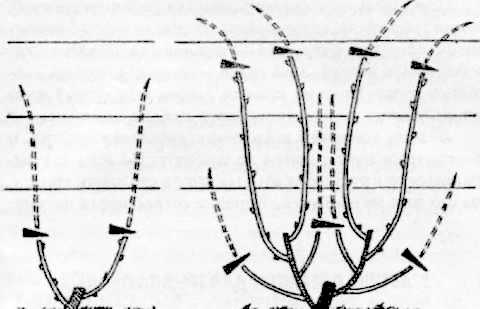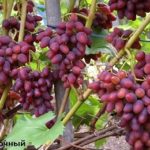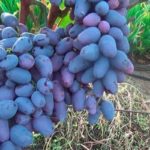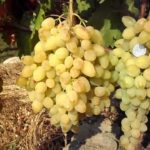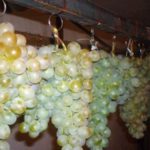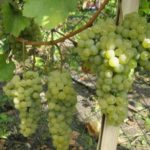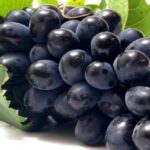Many summer residents grow grape bushes in order to make homemade wine after harvesting. But not every variety is suitable for making wine. One of the popular varieties is the Carmenere grape.
- Description of the Carmenere grape variety
- Historical reference
- Features of the bush
- Vine
- Bunch
- Characteristics
- Productivity
- Ripening time
- Properties of berries
- Taste qualities
- Calories and acidity
- Benefits and harms of use
- Planting a seedling
- Preparing the landing site
- When to plant
- Landing: what for what
- Agricultural technology and care
- Bush pruning
- Watering and fertilizing
- Preventive measures to prevent diseases
- Harvest and storage
Description of the Carmenere grape variety
Before purchasing Carménère grapevines, you should study all the characteristics of the variety so as not to make a mistake in your choice. First of all, pay attention to the characteristics of the bush, the characteristics of the vine and bunches.
Historical reference
For the first time in the 19th century, French winemakers began to grow Carménère. But the grapes were often affected by powdery mildew and phylloxera. Because of this, it was replaced with more resistant varieties. And a few decades later, Chilean winemakers began to grow the hybrid. In Chile, the plant has taken root well and is still very popular.
Features of the bush
A distinctive feature of the bush is the speed of growth of the vine. A few years after planting, if the vine is not pruned, the plant will take over the entire area. The leaves of the plant are light green in color. The shape is usual, characteristic of most varieties; they are pubescent and densely cover the entire vine.
Vine
As mentioned earlier, the vine grows quickly. The bushes can reach 2 m in height. The shape of the plant is spreading. This variety requires regular pruning to prevent overcrowding. The vine is dark brown in color and capable of creating powerful hedges. The inflorescences of the variety are bisexual and do not require additional pollination.
Bunch
The brushes are small or small in size. The shape is cone-shaped. A lot of clusters are formed on the vine. The weight of one bunch reaches 200 g.
The grapes are characterized by a round shape, the skin is a rich blue-black color.
The skin has a velvety texture. The grapes are juicy. On average, the weight of the berry is 7-12 g. The length of the grape grows up to 4 cm. The pulp is slimy and fleshy with a pleasant aftertaste. There is a herbal aroma at the end.
Characteristics
Another important point that is paid attention to before purchasing a grape seedling is studying the characteristics of the selected variety. First of all, you should pay attention to the yield, pollination, and ripening time of the variety.
Productivity
The yield of the Carmenere hybrid is always stable. Up to 21 kg is harvested from the bush annually. Brushes come in different weights. The minimum weight of a bunch is from 700 g. The maximum weight is about 2 kg.
Ripening time
Carménère is an early ripening variety. The first harvest is harvested 110-130 days after the ovaries appear on the vine. The harvest begins to ripen from the second ten days of August until the last days of October. At the beginning of the ripening period, the clusters are red-burgundy in color. As they ripen, they turn black and blue in color.
Properties of berries
Studying the taste qualities is very important before purchasing a plant seedling. Attention is paid to the taste of the grapes, calorie content and acidity of the fruit. It is also important to study the health benefits and harms of berries.
Taste qualities
A grape with a pleasant sweet taste. The pulp has a pleasant nightshade taste with a high juice content. Sometimes there is a slight sourness.
Calories and acidity
The sugar level in fruits is high and amounts to 17-25%. The acidity level is 6-8 g/l. The calorie content of 100 g of product is 75 kcal. Due to the high sugar content in berries, grapes are high-calorie foods.
Benefits and harms of use
Useful properties of grapes:
- Has a positive effect on the lungs.
- Normalizes metabolism due to the high fiber content in the composition.
- Saturates the blood with nitrogen.
- Eliminates constipation.
- Helps lower blood pressure.
- Removes toxins and harmful substances from the body.
- Helps increase the formation of red blood cells in the blood.
- Protects the body from radicals.
- Increases libido.
Eating grapes can cause harm to the body if a person is intolerant to the product. It is not advisable to include berries in food for those people who suffer from high acidity and diabetes. It is not recommended to give red varieties to children.
Planting a seedling
During the procedure, special attention is paid to site preparation, planting dates and technology for planting seedlings in the soil.
Preparing the landing site
The Carménère variety should be planted in open, sunny areas. The more time the plant spends in the sun, the better this will affect the yield:
- The hole is dug to a depth of at least 80 cm. Drainage (pebbles, scrap bricks or small crushed stone) is poured into the bottom of the hole.
- The hole is then filled with a mixture of gravel, crushed stone and fertile soil.
- To deoxidize the soil, add 1 tbsp. l. dolomite flour or eggshells.
- The last layer is covered with black soil.
- You need to fill the hole gradually, watering each layer generously with water.
At the end of preparing the pit, two metal pipes are driven in side by side, then a strong wire is tied to them.
When to plant
You can plant grape seedlings at any time when it gets warm. The vine is planted both in early spring and autumn. But among gardeners there is an opinion that spring is considered the most favorable time for planting. Seedlings planted in spring will have time to take root before autumn and will be able to overwinter.
Landing: what for what
After the hole is ready, begin planting the seedling. Stages of planting the Carmenere variety:
- Dig a small hole in the soil.
- Place the seedling and straighten the roots.
- Cover with soil.
- Lightly compact the soil near the stem.
At the end of planting, water the grapevine generously with warm water. Subsequent waterings are carried out once every two weeks.
Agricultural technology and care
Without care it is impossible to get a good harvest. Caring for grapes includes watering, fertilizing and pruning the vine.
Bush pruning
In the spring, formative pruning is carried out. Two central shoots are left on the vine. As the bush grows, up to 3 stems are left on each shoot. The rest is cut off. Due to the fact that the Carmenere variety grows quickly, it has to be pruned frequently so as not to thicken the plantings. The stems are removed with sharp garden shears so that no creases remain.
Watering and fertilizing
Watering and fertilizing are carried out at the same time. In the first half of the season, the bushes need nitrogen. In the second half of the season after fruiting - in phosphorus and potassium. Manure, ash, and mullein are also added. The first watering is carried out during the period of budding, the second - during flowering. The third time is after the harvest and the last time before the onset of cold weather.
Preventive measures to prevent diseases
The bushes are regularly inspected in order to notice the disease in time and take action. As preventive procedures, plants are sprayed with fungicides, Bordeaux mixture, Karbofos or a solution of laundry soap.
Harvest and storage
The bunches are cut with sharp pruning shears so as not to damage the vine. The harvested crop is stored at a temperature of 0…+2 degrees. The humidity in the room should be at least 80%. The bunches are stored in a darkened room; bright light contributes to the loss of sugar content.

